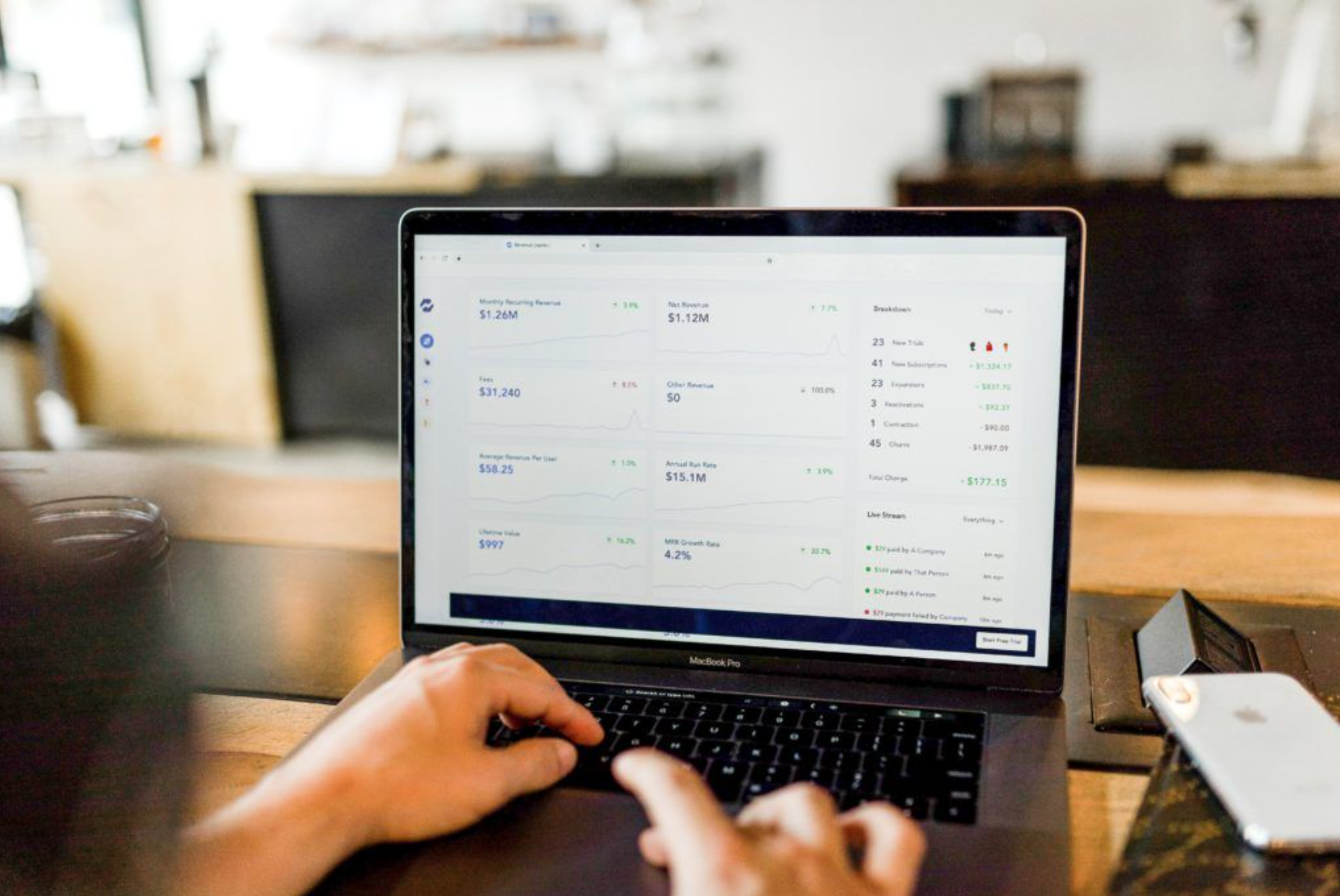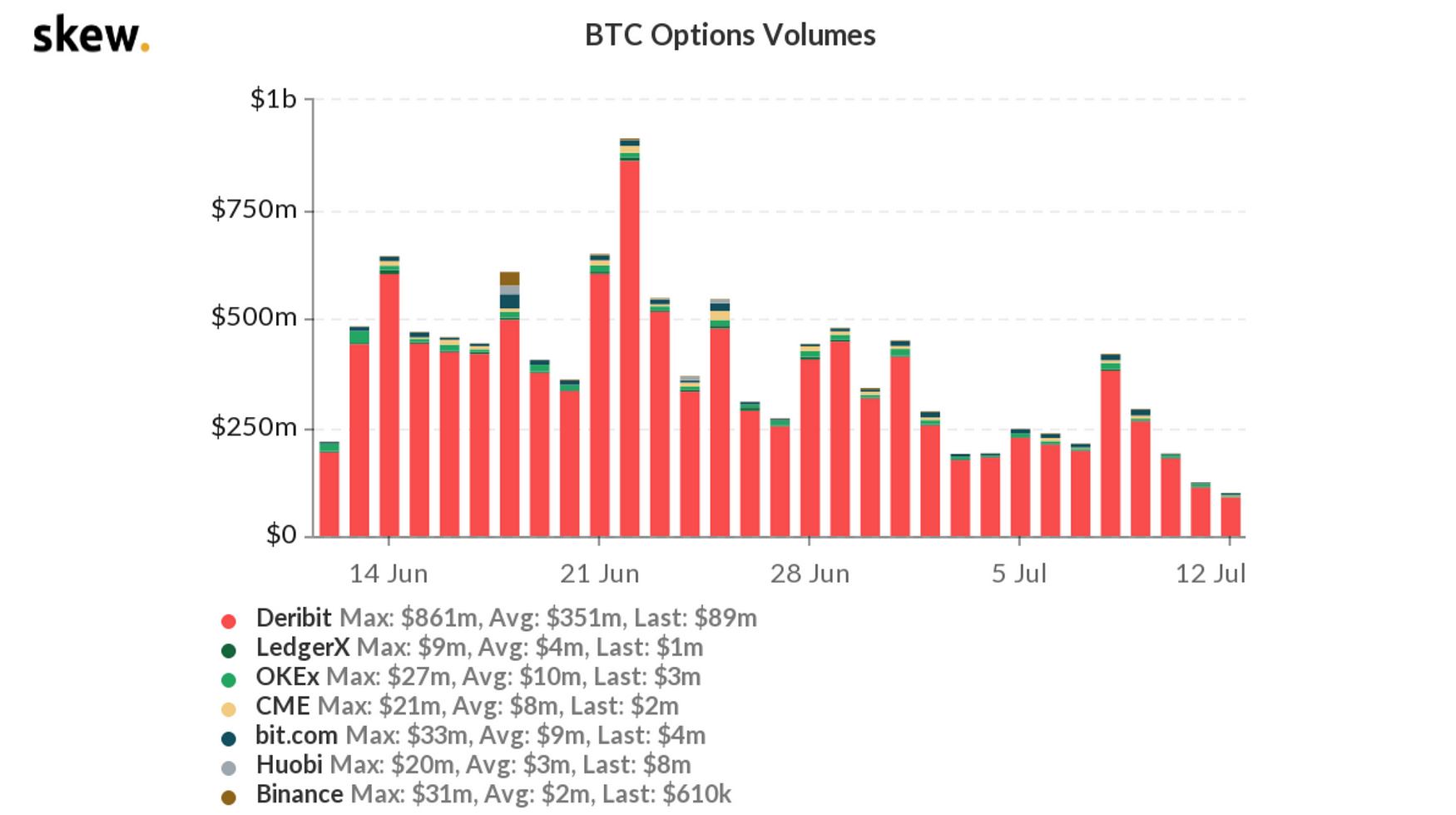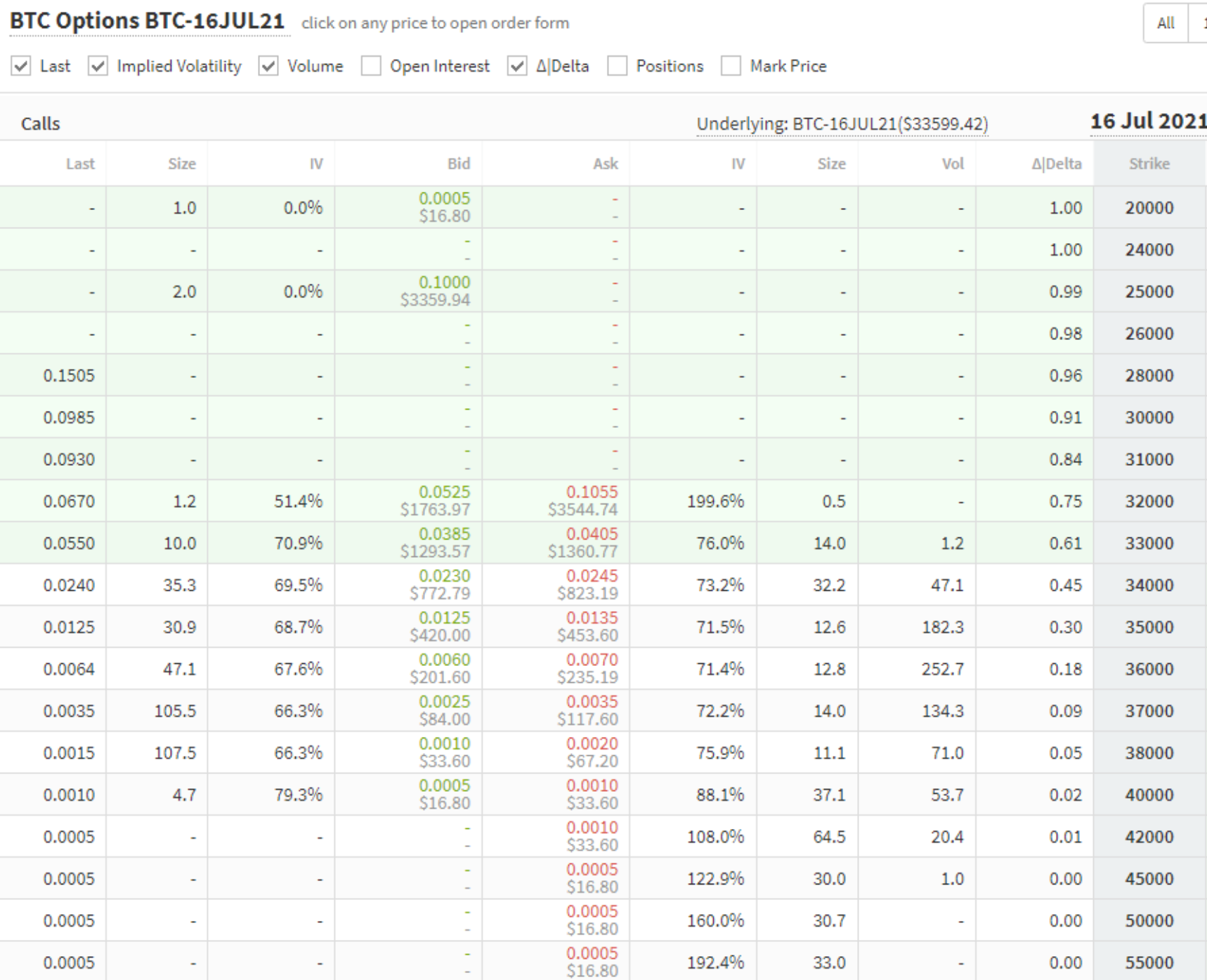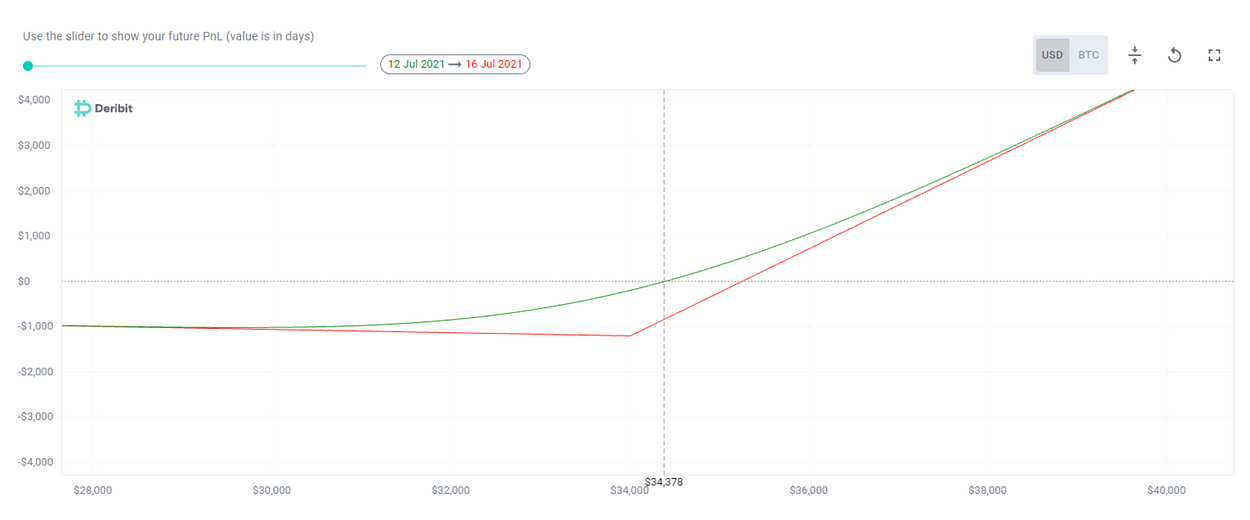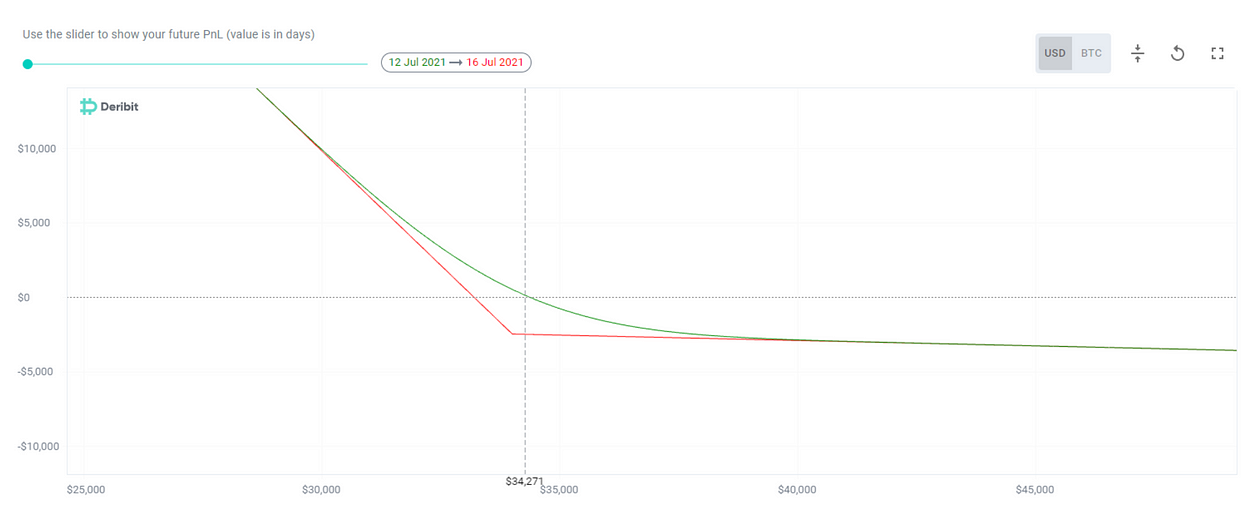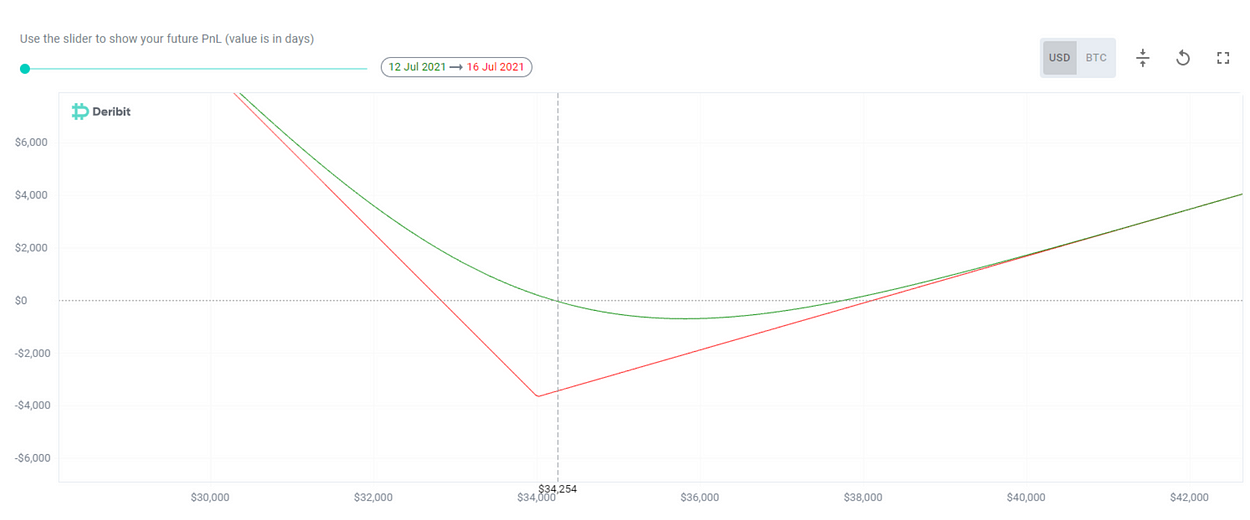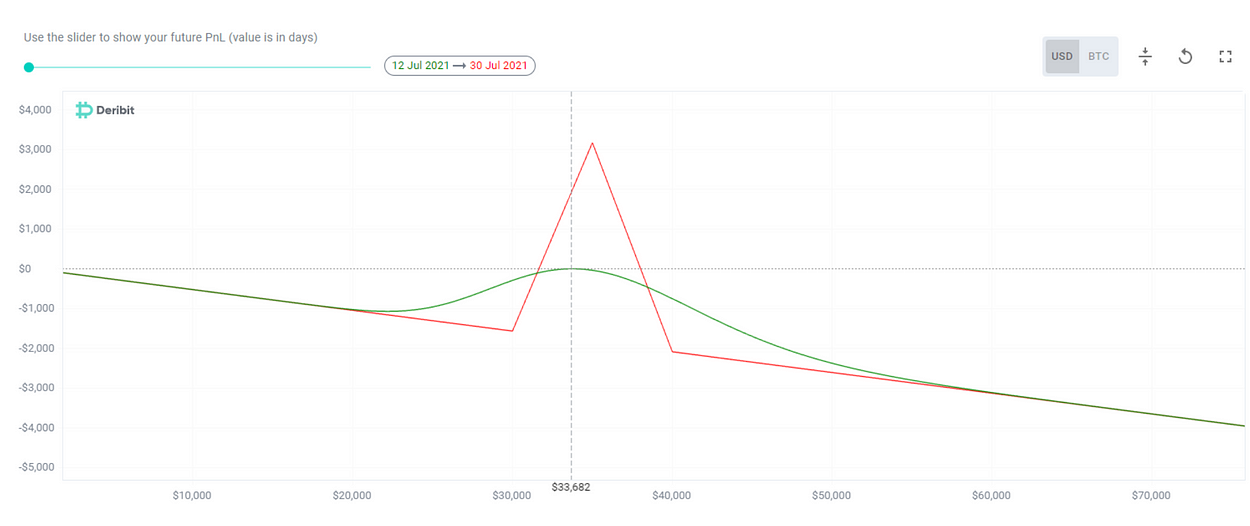Bitcoin options trading strategies

This guide will help you understand cryptocurrency options — how they work, trading strategies, and everything else.
Bitcoin options have been rapidly gaining popularity among investors and traders in recent years. However, unlike the cryptocurrency itself, the concept of options has been known to mankind for centuries. In fact, trading these contracts even in crypto is not very different from the same options in traditional finance. Today we will talk about the features of options and the most popular trading strategies using them.
What is an Option?
An option is a derivative, that is, a financial instrument based on an asset (in this article we will consider the concept of options in the context of Bitcoin), which is a contract between the seller and the buyer. Under the terms of this contract, its holder can (but is not obliged to) purchase the underlying asset at a pre-agreed strike price between the two parties within the expiration date.
Expiration is the date on which the option expires. Options are divided into two types: American and European models. In the American model, the settlement between the parties is made only on the expiration date; in the European model, it is made any day before the expiration date.
Turning from theory to practice — let’s look at a simple example of using options and their unique benefits. Let’s assume that the trader expects that by the time options expire on exchange (let’s say in a month) Bitcoin price will grow by at least $10,000, while now it is trading at $30,000. The exchange has a contract with a strike price of $35,000, a premium of $2,000, and an appropriate expiration time. The trader buys this option, paying a premium. During a month, BTC is growing steadily and reaches the price forecasted by the owner of the contract — he decides to buy the underlying asset at the strike price.
Now let’s calculate his profit. The trader initially paid $2,000. This is the so-called premium, the mandatory “price” of the option, which the seller of the contract receives in any case. Then the trader executed the terms of the deal and bought BTC at strike price thus paying the other party $35,000. In total, he has spent $37,000, but the market price of Bitcoin itself has meanwhile jumped up to at least $40,000.
That is the higher the cryptocurrency’s price, the higher the trader’s profit at a fixed cost. If the price of BTC had fallen below the strike price by the time of expiration, the owner of the contract simply does not buy the coins. Thus, the main advantage of this options trading strategy is potentially unlimited profits with limited risk.
Types of Options
Options are divided into two types:
- Call option — gives the right to buy the underlying asset (in the example above we are talking about this type of option);
- Put option — gives the right to sell the underlying asset.
As an example of dealing with Bitcoin options, we will use Deribit exchange, which is the most popular trading platform for trading these crypto derivatives. Users of Deribit and other exchanges can open both buy and sell options. The bottom line is that options trading strategies can involve one or more of the following four directions:
- Buying a Call option;
- Buying Put option;
- Selling a Call option;
- Selling Put option.
Although options are used by many market players, the key to their success is using contracts to reduce risk and maximize potential profits. Traders who can combine basic options trades with long and short trades can create more sophisticated strategies over time to help optimize their global strategy. Options become most effective not when used individually, but as part of a larger strategy. In combination, options can expose investors to a degree of risk and provide predictable returns and income.
Options vs. Futures
Futures are the most popular type of cryptocurrency derivatives. To recap, a futures contract is a contract with an obligation to buy or sell a specific amount of an asset at a specific price by the expiration date of the contract. The vast majority of cryptocurrency owners trade perpetual contracts, a special type of futures that have no expiration date.
Perpetual contracts have become dramatically popular because of margin trading, which allows traders to use borrowed funds from the exchange, thereby increasing their potential profits. “Loan” is given by the trading floor with the condition of securing the loan with margin. The ratio of margin to borrowed funds is called leverage. For example, with x10 leverage, a trader gets to manage $10 for every dollar of margin.
Herein lies the main danger of margin trading: the higher the leverage, the riskier the trade. That is, a smaller percentage of potential cryptocurrency price movement, in which the margin can no longer cover the trader’s “debt”. Such situations are not allowed by the exchange itself — when a certain price is reached, it will liquidate the user’s position, taking away the margin.
The cryptocurrency market is known for its high volatility — an indicator that characterizes the speed and range of the asset’s price change. The price of Bitcoin changes very quickly, making margin trading very risky. But some options trading strategies allow you to profit much more from volatility — and you can make money on options even when the price of the underlying asset moves in the same horizontal channel.
What does the price of an option depend on?
Depending on the price, options are divided into two types:
- “In-the-money”: the market price of the underlying asset exceeds the strike price and the option can be exercised at a profit for the buyer;
- “Out-of-the-money”: In the opposite situation, buying an option automatically turns into a loss for the buyer.
If the market price is below the strike price, the put option is “in the money” because the short position, in this case, would be profitable for the buyer. Similarly, if the strike price exceeds the market rate of the put option, there is an “out-of-the-money” situation, i.e., a loss for the buyer. The opposite is true for a call.
The value of options is calculated according to the Black-Scholes model. It consists of the following parameters:
- The price of the underlying asset;
- Type of option;
- Strike Price. The “deeper” the option is in the “in-the-money” zone, the higher its value;
- Expiration date. If all other parameters are equal, an option with a more distant expiration date will be more expensive for the buyer;
- Expected volatility of the underlying asset.
Expected volatility is the predicted range of possible price changes, in the context of an option traders are interested in the expected volatility of Bitcoin up to the expiration date. The higher the volatility, the higher the potential for sharp price spikes on the cryptocurrency’s chart. High expected volatility makes the value of an option more expensive.
The most popular options trading strategies
For clarity, let’s use the Deribit exchange tool called Position Builder. It allows you to simulate the opening of a position in options with automatic charting.
Long Call
The simplest strategy. Following it, the trader predicts the growth of Bitcoin price with increased volatility. He buys a Call option with an expiration date of July 16 and strike price of $34,000 and pays a premium to the seller of the contract. If his forecast turns out to be incorrect, the trader’s loss is limited to the premium only, while the potential profit is limitless.
On the chart, the current market price is marked with a vertical dotted line. To date. The red line indicates the change in potential profit depending on the BTC price, displayed on the horizontal axis of the chart. Taking into account the premium when buying the option, the breakeven point of the contract is around $35,250. That is, by the expiration date, Bitcoin must rise to this line for the buyer of the contract to have the benefit of performing its terms.
Long Put
It’s the same as in the previous example, only now you buy a put option. With a strike price of $34,000, the breakeven point is around $33,200.
Covered Call
The strategy consists of holding the underlying asset while simultaneously selling a call option for an equal amount. In this case, the trader can earn on the option premium when the market price of Bitcoin moves horizontally without a clear trend. The possible loss from a sharp rise in the price of BTC will be covered by an increase in the value of the coins held.
Covered Put
In this strategy, the trader also holds the bitcoins themselves and buys a put option. In this case, he remains insured against a possible sharp drop in the value of the cryptocurrency and continues to profit from its growth. This strategy is best suited after a rapid wave of Bitcoin appreciation when a local correction of the asset’s price should be expected.
Long Straddle
In this case, the trader buys put and call options with the same strike price and expiration date. The logic here is simple — this strategy is used in anticipation of a sharp volatile jump in the price of the asset in one of the directions. It does not matter which direction the jump happens — the trader will be able to earn from both falling and rising Bitcoin prices. The main thing is for the price to “move” as far away from the strike price as possible.
The chart shows the expected return for buying two options with a strike price of $34,000. The trader will make a profit if by the expiration date the BTC price goes under $32,800 or rises above $38,100 (we should remember that this range depends on premiums of options themselves).
Short Straddle
It is a similar situation, only here the trader sells instead of buying two options. This strategy has increased risks since the profit is limited by the options’ premium and the loss is theoretically unlimited. Using a Short Straddle is worth it when the market has no obvious trend, that is, the price of BTC trades for a long time in a horizontal range.
“Butterfly”.
This strategy is based on the assumption that the Bitcoin price will remain in a certain range by the expiration date or will break through this range in one of the directions. To do this, you need to buy two call options with different strike prices — the prices will correspond to the upper and lower limits of the predicted range. You also need to sell one call option with a strike price in the middle of the channel. The cryptocurrency volume of the last third option should be double the volume of the previous two options.
The closer to the middle of the range the Bitcoin price will be by the expiration date, the higher the profit will be.
Summary
Remember that trading options involve applying the above strategies or combinations of strategies. It is a fairly complicated process, which often ends up in big losses for new traders. Also, do not forget that a trader must minimize his potential losses if possible — always have extra coins acquired in spot trades.
You can find even more useful information about Bitcoin and cryptocurrencies in general on the website of our cloud-based mining platform Hashmart.io!
